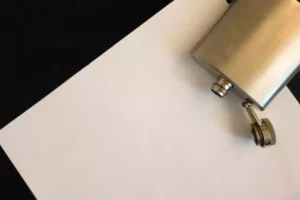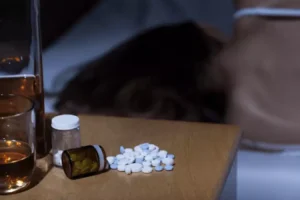
Through the use of various artistic mediums, individuals can externalize their thoughts, emotions, and experiences, gaining insight into their inner self and healing in the process. Art therapy typically involves the guidance of a trained mental health professional, who can facilitate the creative process and help individuals make connections between their art and their emotional experiences. The arts offer an opportunity for people in sobriety to tap into their creativity as a means of coping with their emotions, exploring their new identity, and connecting with their inner self. Through practices such as painting, drawing, writing, and music, the arts provide a safe and constructive way to channel one’s energy and express their thoughts and feelings.
Creativity for Addiction Recovery?

Through expressive art therapy, you can access deep emotions, process your experiences, and express your feelings in a safe and nurturing environment. One of several options for addiction treatment, art therapy for drug and alcohol addiction recovery can provide a creative outlet for addicts to express their thoughts and emotions. Through art therapy, those in recovery can explore, understand and resolve issues they may feel uncomfortable talking about in traditional talk sessions. They can safely feel and process the full range of emotions surrounding their addiction experience. Participants don’t need to have artistic talent — they need to open themselves up to the experience and engage to benefit from this practice. During your recovery, you may find it difficult to communicate your story or verbalize how you feel.
Mindful painting for stress relief

By deepening your understanding of this powerful therapeutic approach, you can make a meaningful difference in the lives of those seeking to overcome addiction and build a brighter future. Sculpture making allows individuals in addiction recovery to engage with art materials in a tactile and three-dimensional way. By working with clay, wire, or other sculpting materials, participants can explore their creativity, improve focus, and develop a sense of accomplishment as they create tangible objects.
Nature-Based Expressive Arts Therapy – Sally Atkins and Melia Snyder
In other words, the therapist provides the materials, equipment, and media required to facilitate a client’s creative expression during the therapy session. It is especially well suited to clients who lack the ability to articulate their inner world with words alone. If you are interested in trying art therapy, make sure you find an art therapist with the appropriate education and experience. You can find an art therapist through the American Art Therapy Association’s Art Therapist Locator.

Freedom to Focus on Patient Care
I give the clients various drawing tools (these sharpies work really well on the boxes), cardstock in various colors, and I also like to offer these brightly colored index cards. I instruct them to decorate https://ecosoberhouse.com/ the outside in ways that represent how they show who they are to the world. However, for this art therapy activity, the contents of the box is the star so the premade option works well and saves time.

Examples of Artistic Practices in Sobriety
- We are proud to offer a housing program for those who wish to seek recovery and continue our efforts to help people find healing through the power of art.
- I instruct them to decorate the outside in ways that represent how they show who they are to the world.
- For example, a painter who has graduated with a fine art degree may then complete graduate training in art therapy to practice as an art therapist, or a professional performer may train as a dance or drama therapist.
- Additionally, by promoting focus and clarity, art therapy ideas for adults in recovery are good for their brain’s health.
No doubt some colleagues will cringe at the idea of making public some of the more common techniques used in the field of art therapy. However, “what is art therapy?” is one of the best-kept secrets in the field of mental health. You might be surprised that on some days I wake up wondering what the heck art therapy is because so much misinformation about it abounds on a Google search. To counteract the media, my intention is to both help you understand what art therapy is about and why it complements and enhances traditional verbal therapy approaches to treatment. All the techniques above are used in expressive arts therapy in conjunction with person-centered, psychodynamic, cognitive-behavioral, and mindfulness-based approaches to maximize and integrate psychological healing. Poetry writing is a central technique in expressive arts therapy that aims to mobilize artistic language, symbolism, and poesy as the source of creative expression.

All helping professionals know that no one intervention can be applied to all clients; they know that the best interventions are those that are tailored to clients’ needs and their presenting situations. As an art therapist, I can say from experience that this challenge is the “coolest” part of my work with clients—to invent a creative strategy to promote change, insight, and well-being. art therapy ideas for adults in recovery A good art therapist, like a good psychologist, counselor, or family therapist, is adept at innovation and creative adaptation. A good art therapist also knows that for many clients, no technique is needed if the client is capable of creative expression without a directive or gimmick. The programs that are offered here at Sabino have been truly phenomenal in helping me recover.
- Plus, many adults appreciate the way art allows for nonverbal communication and exploration of issues on a symbolic level.
- That means that when I set down to create each piece, I reflected on my work with a specific client, and then created the artwork with that experience in mind.
- However, art can be an effective tool in helping those with substance use disorder (SUD) reach and maintain recovery.
About the Clients Referenced in this Post
- Bridge drawings make excellent art therapy directives for exploring these life transitions.
- Art is just one of the powerful tools you can use to improve your recovery journey and prepare to move forward into a life free from substance use.
- Give them a moment to reflect on what activities, people, or things help them feel good.
- Art therapy is a technique rooted in the idea that creative expression can foster healing and mental well-being.
- The journal provides a safe place for a client to express their authentic voice and practice honest self-expression (Knill & Atkins, 2020).